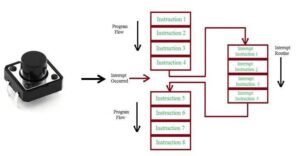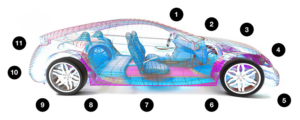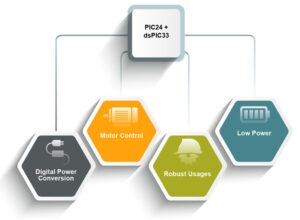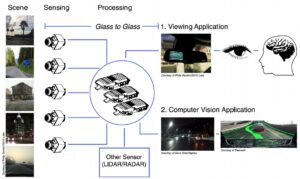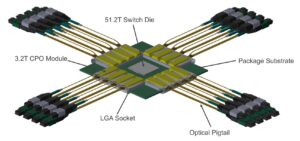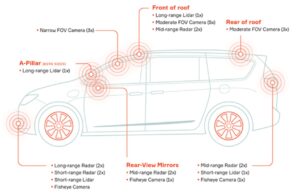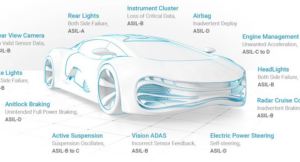Embedded MCUs are purpose-built for use in various specific applications and rely on embedded peripherals, various communications protocols, conventional operating systems (OS) or specialized real-time operating systems (RTOS), middleware, application software, and development environments. While MCU stands for microcontroller unit, it could also be interpreted as mission controller unit since these devices are optimized for […]
MCUs for ADAS – what’s the difference?
The emergence of advanced driver assistance systems (ADAS) is changing how designers use and specify microcontrollers (MCUs), but it’s only one dimension of the changes occurring in the design of automotive systems (Figure 1). This FAQ will begin with the basics of AEC-Q100 requirements for automotive integrated circuits – those requirements are not going away […]
MCU specification considerations for robotics
Robotics platforms have unique needs where microcontroller (MCU) performance is concerned. MCUs that have been optimized for use in robots often incorporate multiple functions, including built-in internet protocol (IP) connectivity, safety and security functions, and advanced control algorithms. Integrating an MCU core with a field programmable gate array (FPGA) is another approach to achieving optimized […]
Nuances of low power MCUs for wireless sensors and wearables
The optimization of microcontrollers (MCUs) in power-sensitive applications such as wireless sensor nodes and wearables is all about maximizing power management effectiveness. To minimize power consumption, low-power MCUs typically operate at frequencies below 50 MHz, compared with hundreds of MHz or even 1+ GHz for conventional MCUs. These power-optimized MCUs also use low-power peripherals; they […]
8-, 16- and 32-bit MCUs…are more bits better?
Are more bits better in an MCU? That’s similar to asking: are more cylinders better in an internal combustion engine (ICE)? Peripherals and other features matter, not just bits (or cylinders). For example, in the 1980s, Volvo offered a station wagon with a turbo-V4 engine that was faster off the line than Chevrolet Corvette with […]
What does automotive qualification mean?
Automotive qualification means that a component or system meets specific industry standards for manufacturing and performance. Automotive qualification is not a static landscape. New standards are developed in response to new technologies, and existing standards evolve in response to changing applications and new mission profiles. This FAQ reviews and contrasts key international automotive standards such […]
Packaging options and advances for digital ICs
The packaging options for digital ICs (and the related buzz words and acronyms) continue to multiply. Advanced digital ICs such as microprocessors, field-programmable gate arrays (FPGAs), and application specific custom ICs (ASICs) are offered in a wide array of package styles such as: QFN, quad flat no leads; FBGA, fine pitch ball grid array; WLCSP, […]
Technical challenges of automated vehicles
Automated vehicles, also called self-driving cars or autonomous vehicles, are slowly emerging. It’s not an “all or nothing” situation. Features and technologies needed for automated driving are being developed incrementally, with some already in use. This FAQ looks at some of the technologies needed for automated driving, including various levels of “driver support features” versus […]
The role of ADAS sensors in automotive design
Advanced Driver Assistance Systems (ADAS) are intended to prevent deaths and injuries by reducing accidents. Exemplary ADAS applications include: pedestrian detection/avoidance, lane departure warning/correction; traffic sign recognition; automatic emergency braking, and; blind-spot detection. This FAQ starts with an overview of the “levels of driving automation” and its relation to ADAS. It then reviews the role […]
What are ASILs and how do they work?
Automotive Safety Integrity Levels (ASILs) are a risk classification framework based on the ISO 26262 standard for Functional Safety for Road Vehicles. ISO 26262 is the adaptation of the IEC 61508 standards to address the specific needs of electrical or electronic (E/E) systems within road vehicles. This FAQ reviews the current status of the ASIL […]
